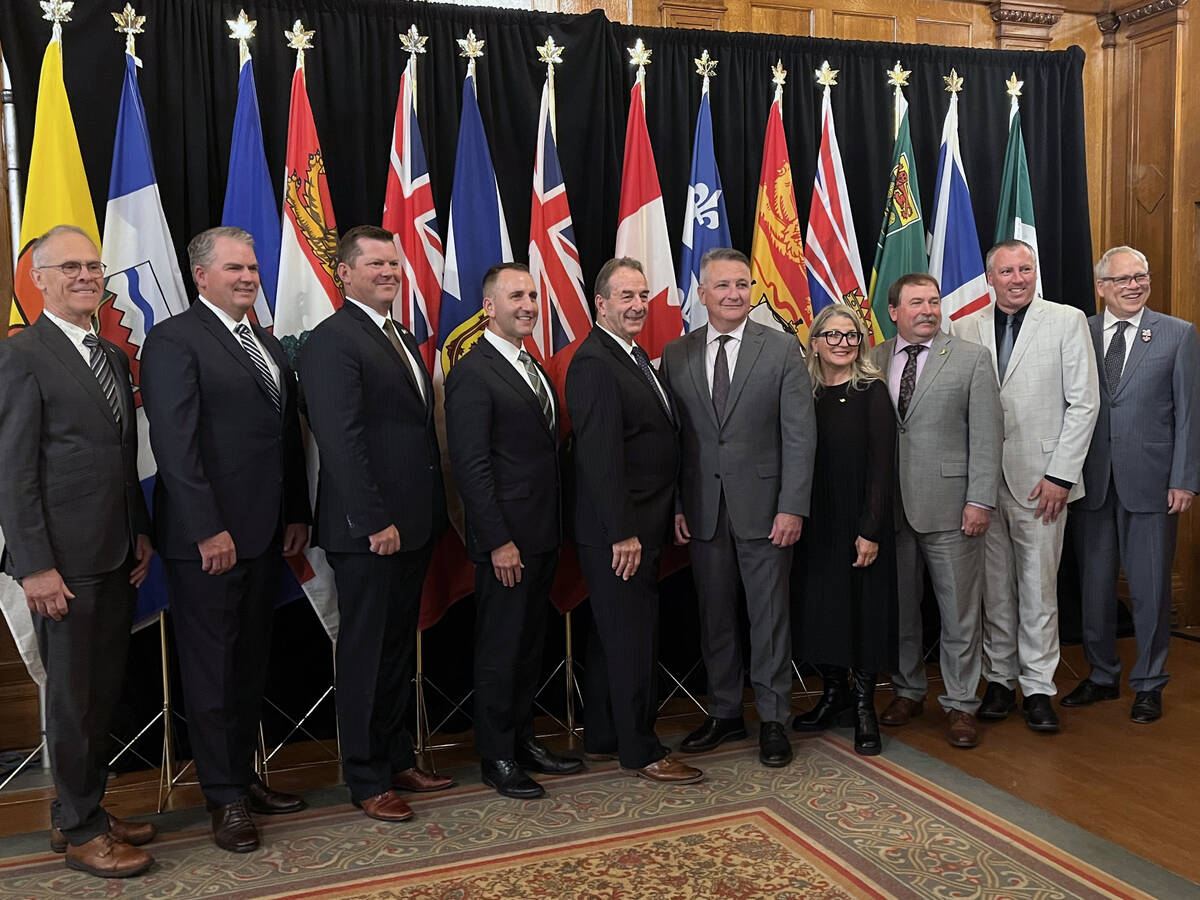DUCHESS, Alta. – In the province of blue-eyed sheiks and flowing riches from the oil and gas sector, some rural landowners are feeling short-changed.
Nearly 200 people from southeastern Alberta crowded into the Duchess community hall on Oct. 19 to tell representatives from one of North America’s largest energy companies that they are unhappy with the way natural gas development is occurring in their region.
The meeting was called by the Eastern Irrigation District Landowners Association, formed in 1973 when natural gas exploration began in earnest in the region.
Read Also

Agriculture ministers commit to enhancing competitiveness
Canadian ag ministers said they want to ensure farmers, ranchers and processors are competitive through ongoing regulatory reform and business risk management programs that work.
EnCana Oil and Gas wants to increase shallow natural gas drilling with flat rate compensation of $350 for additional wells on a single site. It is common practice to drill several diagonal wells from the same surface location to reduce surface impact.
“The $350 is totally unacceptable; it isn’t a cup of coffee a day for a year,” said rancher Tom Livingstone of Duchess after the meeting.
“Poverty is going to be a hard sell when energy prices are like this.”
Landowners receive a negotiated, private lease payment for access to the property and well site.
Those attending the meeting rejected the low flat rate as they talked of added traffic on more gravelled access roads, dust, noise and potential ground water and soil contamination.
Most at the meeting believed their original agreements were for one well per site and did not foresee multiple wells or ensuing responsibilities.
Dave Mudie, vice-president of EnCana’s Tyrell business unit, said the company came to Duchess to improve communication.
“I think we have heard the compensation is something you aren’t happy with,” he told the meeting.
He said the compensation rate is lower because fewer roads and pipelines mean less disturbance when additional wells are drilled on the same site.
“Obviously on the compensation issue itself … we want to meet some of the individual landowners and get their perspective. We want to get an agreement,” he said in a later interview.
Mediation may be needed to decide what is fair. The same level of compensation was offered in the Fort Saskatchewan area near Edmonton and the surface rights board ruled the $350 payment was reasonable.
Some farmers suggested a special group be formed to address the payment level. Farm input costs are increasing, incomes are declining and energy companies are becoming richer with limited compensation to those who manage the land, some said.
“I think the companies should have the right to drill more wells but they should also have to compensate and renegotiate because they are not living up to the rental deal they made in the beginning,” said Bruce Beasley, president of the Patricia Landowners Association.
Alberta infrastructure minister Lyle Oberg, who represents the Duchess region, said landowners should be recognized as partners in the oil and gas industry and should receive a larger financial share. However, he was reluctant to say the government would legislate that partnership.
“When you are talking about the proceeds of this well, you’re talking about .001 percent of the value of the well to the landowner.”
Mudie said EnCana expects cash flow revenue from the Drumheller-Brooks region to be $800 million in 2005. Overall, the company earned $3 billion in 2004.
EnCana has 9,400 wells in production in the area, which pump 485 million cubic metres of natural gas from shallow wells. Another 950 wells are projected for next year with an anticipated density of 12 wells per section.
Other complaints arose over land agents from energy companies who divide and conquer neighbours without fully disclosing plans about increased activity.
Poor communication was another bone of contention.
Repeated calls about problems such as spills and injured livestock seem to fall on deaf ears at the company’s head office in Calgary, landowners said.
Suggestions for a single consumer telephone number were offered as farmers complained of dealing with a corporate puzzle when they had a concern.
Clint Hendrickson of Duchess said at one time wells offered a good supplemental income but farmers have found EnCana harder to work with after the company emerged from a marriage between Alberta Energy Company and PanCanadian Resources.















